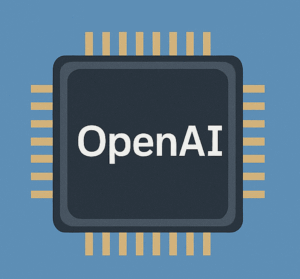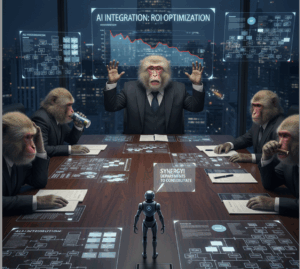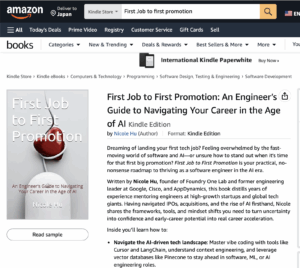In the short span since ChatGPT’s groundbreaking debut in November 2022, the artificial intelligence landscape has undergone a dramatic and far-reaching transformation. What began as an impressive feat in natural language generation quickly evolved into a broader technological shift—one that’s now reshaping not just communication and creativity, but the very fabric of software development itself.
Two years later, by April 2025, AI systems have moved far beyond clever text predictions. They now participate in design thinking, support complex reasoning, write code, and even generate working software applications with minimal human input. Among the most fascinating developments in this journey is a concept that recently gained traction among developers: vibe coding.
What Is Vibe Coding?
The term vibe coding was popularized in February 2025 by Andrej Karpathy—co-founder of OpenAI and former Director of AI at Tesla—during an experimental coding session he shared with the tech community. Karpathy demonstrated a new paradigm for programming that was less about typing code line by line and more about “vibing” with the machine—describing intentions, issuing commands in natural language, and letting the AI generate, test, and refine the output in real time.
As Karpathy put it:
“It’s not really coding. I just see things, say things, run things, and copy-paste things—and it mostly works.”
The essence of vibe coding is this: instead of relying on rigorous syntax and domain expertise to construct software, developers communicate their goals to large language models (LLMs) like ChatGPT or tools like GitHub Copilot or Cursor. These tools interpret instructions, generate code, and even fill in architectural or design gaps based on context. Some developers even take it a step further by speaking out loud, using voice-to-text and AI assistants in a conversational loop to create functioning software.
The Promise and Pitfalls
The allure of vibe coding is easy to see. It lowers the barrier to entry, accelerates prototyping, and allows engineers to spend less time writing boilerplate code or wrestling with syntax. It brings software development closer to a form of creative expression—more like directing a symphony than grinding through a build.
But this vision comes with important caveats.
Karpathy himself acknowledged that vibe coding isn’t always smooth sailing. AI coding assistants are not yet fully capable of understanding complex bugs or debugging logic errors on their own. In many cases, developers still need to try unrelated changes or prompt-engineering tricks to get around the AI’s limitations. And while these tools are powerful, they can introduce inaccuracies or inefficiencies that an experienced human developer would catch immediately.
“It’s quite amusing,” Karpathy said of the experience, “and not too bad for throwaway weekend projects.”
In other words, vibe coding isn’t yet production-ready for mission-critical systems. It’s fast, fun, and useful—but not foolproof.
The Reality of AI Coding Tools Today
As of April 2025, tools like GitHub Copilot, Cursor, and ChatGPT continue to evolve, but they are not magic wands. While impressive, they still require developers to understand the underlying technology stack, read and edit code, debug errors, and verify correctness. Let’s take a quick look at where we stand:
- GitHub Copilot acts as a pair programmer, providing smart suggestions based on your current codebase. It works best when you already understand the language and context.
- Cursor, a newer tool that’s gaining popularity, goes further by helping you scaffold projects. It can recommend frameworks, install packages, and generate file structures—saving hours of setup. Still, it requires active developer involvement to steer decisions, fine-tune outputs, and validate results.
- ChatGPT (especially in its code-interpreter and plugin-powered modes) can now generate end-to-end applications, write tests, and even explain the code it generates. But it lacks full awareness of large, multi-repo environments, and it can hallucinate or overfit solutions.
The key message? These tools enhance your productivity, but they don’t replace your responsibility. You still need to be the captain of the ship.
What You Still Need to Learn as a Developer
Utilizing AI assisted coding is a key skill, but LLMs haven’t eliminated the need for foundational knowledge. If anything, they’ve made deep understanding even more valuable. Why?
Because AI can only amplify your ability to reason, architect, and design when you already have the mental models and experience to guide it. To be a successful engineer in this AI-assisted future, you still need:
- Strong grasp of Operating Systems: Understanding memory, threading, scheduling, and system calls is vital when working on performance or system-level code.
- Data Structures and Algorithms: AI tools can suggest solutions, but you must know which ones are optimal and why.
- Programming Languages: Even with vibe coding, familiarity with at least one or two languages like Python, JavaScript, or Java helps you debug, extend, or refactor code responsibly.
- Databases and Storage Systems: You need to choose the right data store for your use case, plan sharding, write performant queries, and understand consistency, indexing, and transaction models.
- System Design & Architecture: AI can scaffold microservices, but it can’t yet make architectural tradeoffs or align design with long-term product goals.
- Engineering Practices: Testing, version control, CI/CD pipelines, security, and documentation are all still critical—and require human oversight.
The bottom line: AI doesn’t make technical depth obsolete. It just changes how that depth is applied.
How Developers Should Adapt
To thrive in this new era of AI-driven development, engineers need to shift their mindset. The question is no longer, “Will AI replace me?” It’s “How can I use AI to level up?”
Here are some practical strategies:
- Think in Prompts, Not Just Code
Learn how to write clear, structured prompts to guide AI tools effectively. Prompt engineering is quickly becoming a critical skill. - Pair Programming with AI
Use tools like Copilot or Cursor actively. Let them handle boilerplate so you can focus on higher-order thinking. - Stay Curious and Keep Learning
The fundamentals still matter. Keep improving your understanding of systems, design patterns, and problem-solving strategies. - Collaborate and Experiment
Try vibe coding on hackathon projects or weekend experiments. Explore what works for you, and share your findings with the community.
Conclusion: The Future of Programming Is AI Collaborative
AI is not here to replace engineers—it’s here to partner with us. Tools like ChatGPT and Copilot are redefining the craft of software development. Vibe coding might sound whimsical, but it hints at a profound shift: programming is becoming more intuitive, expressive, and accessible.
But true expertise still matters. Just like calculators didn’t eliminate math, AI won’t eliminate the need for good engineers. It simply raises the bar and redefines what “good” looks like.
So yes, explore vibe coding. Embrace AI in your workflow. But don’t forget to build your foundation, deepen your skills, and lead with curiosity.
Because in the end, the best developers won’t just “vibe” with AI—they’ll collaborate with it to build the future.
My book First Job to First Promotion covers this topic in depth, with practical tips and real-world insights to help you build strong connections at work. Visit 0to1advisor.com to learn more.




